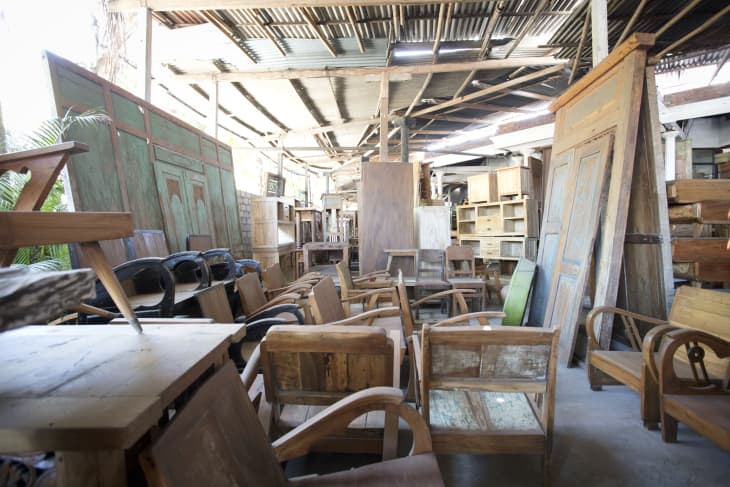A Pro’s Take on How to Avoid Buying Fake Antiques

It’s finally springtime, and if you’re an antiques lover like me, that means it’s antique market season. What a glorious feeling to be weeding your way through Brimfield Market or Les Puces de Saint-Ouen and coming across an alluring oil painting of someone 300 years older than you, or pair of Marcel Breuer Wassily Chairs that are just worn-in enough? It’s love at first sight and you have already begun mentally refinancing your mortgage to bring those babies home. But, buyers beware, everything is not always as it seems. Which raises the question: how can you tell a real from a fake when it comes to shopping vintage? We consulted with a friend and expert Toma Clark Haines, CEO of the world’s largest touring company, The Antiques Diva (and an impossibly nice person), who shares her tips on how to know if something is indeed, the real deal.
1. Trust your gut
“My first rule of thumb when it comes to buying antiques is, if you love it and if it’s a price you’re willing to pay, then it’s the right piece for you. But that doesn’t always mean that’s it the right price for the piece. You’ll want to talk to the dealer to see what they know about the piece, but also, more importantly, what they don’t know. Trust your gut on whether or not you’re dealing with someone reputable. The key thing when it comes to antiques is making sure that you’re buying what you think you’re buying.”
2. Apply ageism (just this once)
“When it comes to antique chairs, there is one super simple way to determine age (or at least look like you know what you’re doing). If the bottom of the chair is not lined, simply slip your hand under the edge of the chair and rub along its underside. If the wood is rough and obviously hand carved, voila! You’re dating the piece as pre-industrial revolution, before wood was being machine cut (which started around 1860). Older chairs also often tend to be significantly heavier than their contemporary counterparts.”
3. Search for a sign
“In the ‘good ole days of yore,’ most furniture was not made for the masses and thus left unstamped. Makers’ marks were reserved for the top-quality pieces of the day. You have to play antiques detective. The easiest way to determine age is to look at how the chair was constructed. Look at the joints and the construction methods. Going back to the vintage Eames Lounge Chair as an example, the original Eames chair was built with all of the screws hidden inside the chair. When you see an “Eames” Lounge Chair with screws outside of the wood shell you know automatically that you are buying a knock off. Look for these same tale-tell signs for 18th century furniture, too. Look at how it’s constructed. Check the hinges or joints. Was it handmade? How was the wood cut or carved? Most handmade pieces will show irregularities to the surface. Check to see if all the elements are identical. If handmade, all four legs on a carved chair are likely not going to be 100% perfect.”
4. In the end, pitch the list
“The most important rule is to allow room to fall in love. While I plan my day with a shopping list in hand, is it my fault that a Baroque painting older than America starting calling my name? The French call it coup de foudre. It means to be struck dumb by lighting, to fall in love at first sight. When antiquing, you can have all the measurements in the world with you, but the reality is an antique chooses whether it wants to go home with you. Not the other way around.”